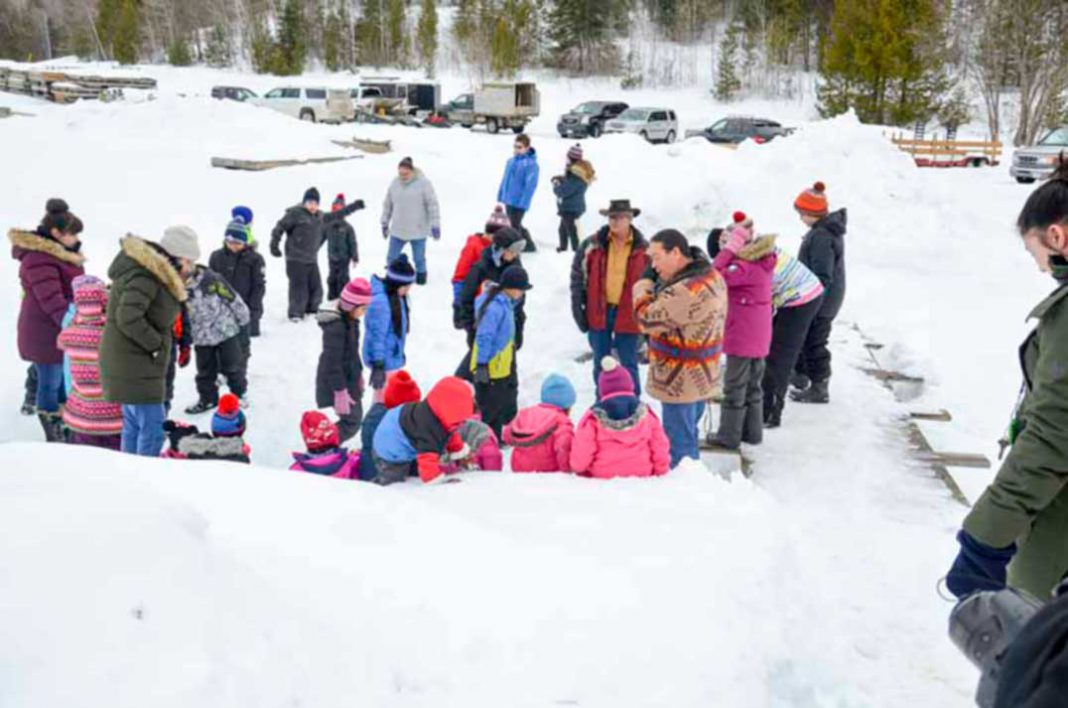BIRCH ISLAND—Anticipation had been building for weeks as students at Whitefish River First Nation Shawonosowe School watched the development of tiny brook trout as they hatched from helpless eggs into tiny fry capable of surviving in the bay until the spring runoff brings nourishing nutrients into the lake.
On Friday, February 17 the students scooped the now well-hatched fry from the micro-hatchery in their classroom and placed them into a white plastic bucket for the trip to Birch Island’s J & G Marina, where a hole had been cut in the ice in anticipation of their arrival.
The 12,000 tiny fry barely took up three inches in the bottom of the pail, despite their numbers, plenty enough for each student to be able to take a turn transferring them by small dipnet into the water.
Elder Tim McGraw was on hand to provide a traditional Anishinabe blessing, and to lay down the sacred medicine semaa (tobacco) along with the invocation.
Students gathered around the hole in the ice, eagerly anticipating their turn as they watched their colleagues settling the fry into the hole.
“This is great, wonderful really,” said Rolly Frappier, the Microhatchery Project representative who has been working with students in area schools to set up the microhatchery program. “This is the future,” he said, pointing to the students. “Look at her,” he said, singling out one young girl who was delicately placing the dip net in the hole. “She is so excited. I see her every time I come to the school. She is just so engaged in this.”
It is easy to see that the project is near and dear to Mr. Frappier’s heart as he makes no effort to disguise his passion for the project. “You haven’t seen anything yet,” he vows, noting that more and more schools, both First Nations and non-Native, are coming on stream with each passing season.
“We will be back in the spring with the walleye,” he noted.
The tiny fry are very tough. “You would be really surprised at just how tough those little fellas are,” said Mr. Frappier. “I took about 40 of them up North, not in water, just on ice. When I placed them on the slide under the microscope, they just started wiggling about. After we were done, I put them back on the ice and brought them home to go back in the micro hatchery. They did just fine.”
As the planting got underway, Chief Shining Turtle arrived to join in the fun with his daughter. “I’m ready to get right in there,” he offered with a grin, but nonetheless patiently waited his turn. With the dip net.
Encouraging a sense of stewardship of our province’s natural resources among youth is vital to ensuring those resources will be here for future generations, notes Mr. Frappier.
In the case of First Nations students, the lesson dovetails perfectly with traditional teachings, which emphasize the responsibility of each generation to preserve and protect resources for the next seven generations.
“It is wonderful to see,” said Mr. McGraw. “The students are learning so much from all of this.”



